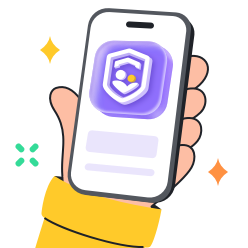Люди используют свои телефоны, чтобы запись жизнь и важную информацию, которая, как можно подумать, когда-нибудь может оказаться актуальной. От записи интервью до слежки за действиями детей с помощью приложений родительского контроля — можно узнать гораздо больше о том, как запись на свой телефон.
В этом руководстве вы узнаете, как лучше всего запись звук и звонить на свой телефон (как Android, так и iPhone), чтобы ничего не пропустить.
Как запись на телефоне Android?
Ваш телефон Android — это портативная звуковая система, которую можно использовать, если вам нужно запись лекцию, интервью или когда вам хочется спеть мелодию.
Если вам нужно записать мимолетный разговор или рейтинг встречу, вот подробное руководство по запись звука на вашем устройстве Android:
Пошаговое руководство по запись звука на телефоне Android
- Найдите приложение Запись er». Почти на всех смартфонах Android есть предустановленное приложение под названием «Voice Запись er». Найдите его на панели приложений и дважды щелкните по нему.
- Оптимизация настройки запись : большинство из этих параметров подходят, но некоторые телефоны могут иметь дополнительные настройки для еще большей настройки звука. Ищите такие функции, как «Формат Запись » и «Подавление шума».
- Хит запись : обычно это большая красная кнопка, запускающая процесс запись сеанса. Откройте его и оставьте звук!
- Пауза и остановка. Большинство приложений запись имеют кнопку паузы и остановки, чтобы пользователь мог запись любым удобным для него способом. Если возможно, делайте перерывы и нажмите кнопку остановки после завершения запись .
- Сохраняйте и делитесь: когда вы останавливаете запись , вы можете сохранить ее под любым именем. Вы также можете отправить его своим друзьям через приложения для обмена мгновенными сообщениями, электронную почту или облачное хранилище.
Чтобы оптимизировать качество звука, вы можете следовать следующим советам:
- Сведите к минимуму фоновый шум. Насколько это возможно, всегда следует работать в тихом месте. Если внешний , постарайтесь защититься от ветра.
- Располагайте телефон с умом. Держите телефон так, чтобы он мог слышать больше, в зависимости от того, лекция это или играет группа. Поэкспериментируйте с расстоянием и углом.
- Внешний микрофон: Если вы хотите запись что-то профессионально, попробуйте использовать внешний микрофон, подключенный к разъему для наушников.
Тем не менее, встроенная функция запись весьма помощь ; сторонние приложения более богаты по функционалу.
Некоторые из них могут включать в себя расширенные инструменты редактирования, параметры устранения шума и совместимость с сервисами облачного хранения.
Как запись на iPhone?
Хотя iPhone прост в использовании, этапы запись звука на iOS отличаются от Android.
Яблоко очень заботится о конфиденциальности своих пользователей, что влияет на некоторые функции запись , но встроенного приложения Voice Memos достаточно для создания четких голосовых воспоминаний.




Давайте рассмотрим встроенные функции запись , доступные на устройствах iOS:
- Голосовые заметки Приложение: встроенное приложение «Голосовые заметки» — это ваша любимая местоположение для запись голоса на вашем iPhone. Найдите его на главном экране или в библиотеке приложений и откройте.
- Нажмите, чтобы запись : весь каркас сдержан и прост, с большой красной кнопкой, занимающей большую часть пространства в центре. Вы можете нажать на него, чтобы начать процесс запись . Он может захватывать звук и отображать форму сигнала в режиме реального времени.
- Пауза и остановка: Чтобы на некоторое время остановить запись , нажмите кнопку паузы в левом верхнем углу экрана, которая представляет собой две вертикальные линии. Чтобы полностью остановить процесс запись , нажмите ту же кнопку еще раз.
- Сохранение и редактирование. После завершения нажмите кнопку «Готово» в правом верхнем углу экрана. Здесь вы можете дать название своей запись и обрезать ненужные разделы с помощью значков редактирования.
В родном приложении Apple Voice Memos есть опции для редактирования запись , а также для обмена ими на устройствах Apple с помощью iCloud.
Например, для подкастера или музыканта приложение «Диктофонные заметки» запись файлы в различных форматах качества, чтобы удовлетворить потребности человека, использующего приложение.
Как запись звонки на телефоне Android?
Бывают случаи, когда телефонный звонок содержит информацию, которую вы хотели бы вспомнить, и не только на несколько минут.
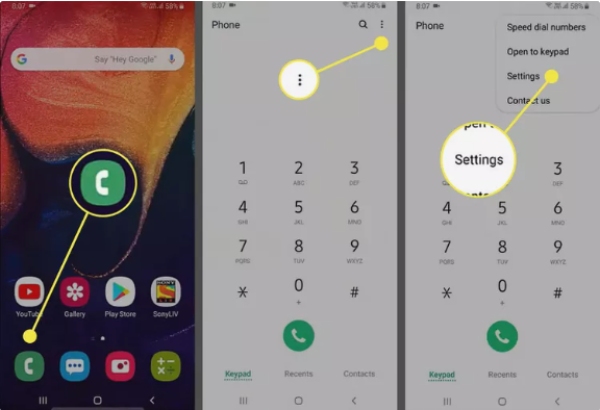



К счастью, вы можете запись звонки на своем телефоне Android, чтобы всегда иметь возможность вернуться к разговору позже.
- Проверьте свои настройки . Однако не все устройства Android оснащены встроенной функцией запись вызовов. Перейдите в настройки приложения «Телефон» и найдите такие функции, как « запись вызовов» или « Запись вызовов».
- Включить запись : если она доступна, найдите функцию запись вызовов в настройки , затем активируйте ее на своем устройстве. Это может позволить вам запись все звонки, звонки с неизвестный номеров или назначенных контактов.
- Запись во время разговора: после включения на экране вызова во время разговора могут появиться параметры запись (обычно опция « Запись »). Коснитесь его, чтобы немедленно начать запись диалога.
Если ваш сотовый телефон не оснащен встроенной функцией запись , вы найдете множество приложений, которые могут выполнить эту работу.
Ознакомьтесь с этими приложениями и выберите то, которое принесет вам наибольшую пользу. Однако при использовании сторонних приложений внимательно продумайте разрешения и убедитесь, что они отражают ваши настройки конфиденциальности.
Чтобы гарантировать, что при запись вызова не возникнет проблем, вы также можете воспользоваться следующими советами по устранению неполадок:
- Проблемы совместимости. Иногда вы можете столкнуться с проблемами запись вызовов с помощью стороннего приложения. Вам следует убедиться, что приложение совместимо с вашей моделью телефона и Версия Android .
- Разрешения: убедитесь, что у приложения есть разрешение на доступ к микрофону вашего телефона и хранение файлов на вашем устройстве.
- запись входящих вызовов. Также важно отметить, что некоторые приложения могут ограничивать возможность запись входящих вызовов. Посмотрите на функции, которые предлагает приложение, и измените их, если есть возможность.
Как запись звонки на iPhone?
Набрать номер на iPhone и запись его немного сложнее по сравнению с Android, поскольку Apple очень тщательно подходит к настройки конфиденциальности.
К сожалению, в iPhone нет встроенного приложения, позволяющего мгновенно запись вызов.
Однако всегда есть способ обойти использование других устройств или приложений, которые могут иметь некоторые ограничения.
Пошаговое руководство по запись звонков на телефоне iOS
Использование другого устройства:
- Наберите номер на своем iPhone и переведите его в режим громкой связи.
- Подключите другой телефон, планшет или компьютер с приложением для запись , чтобы услышать звук.
- Он эффективен для входящих и исходящих звонков.
Через встроенные функции (ограниченно):
- Во время разговора нажмите кнопку «Добавить вызов», чтобы создать конференц-связь.
- Выберите свой номер (например, номер голосовой почты) или службу, запись звонки.
- Подключите звонки, и сервис сохранит запись звонка.
- Это работает не для всех операторов связи и может взимать дополнительную плату.
Использование сторонних приложений:
- Подобно обычному методу конференц-связи, существуют такие приложения, как TapeACall Pro или Rev Call Запись .
- Загрузите приложение и используйте его в качестве руководства при настройке запись вызовов.
- Для входящих вызовов вам необходимо подключить линию запись приложения к вызову.
- Большинство этих приложений требуют подписки пользователя и могут иметь низкое качество связи.
Apple заблокировала функцию прямой запись вызовов на iPhone из-за уважения к конфиденциальности пользователей, хотя некоторым пользователям это может быть неприятно.
Где хранятся запись на моем телефоне?
После того, как вы узнали, как запись на свой телефон, вам может быть интересно узнать, где находятся эти моменты запись .
Также важно узнать о местоположение этих запись на устройствах Android и iPhone, а также о том, как эффективно перемещаться по ним и работать с ними.
Аудио-рай для Android
В телефонах Android запись обычно сохраняются во внутренней памяти в определенном каталоге.
Точная точка запись может отличаться в зависимости от типа телефона и используемого приложения.
Вот общее руководство:
- Встроенная запись : найдите папку под названием « Запись » или «Голосовая Запись » внутренний памяти вашего мобильного телефона. Вы можете получить доступ к этому хранилищу через приложение «Мои файлы» или другое приложение файлового менеджера, которое может поставляться с вашим устройством.
- Сторонние приложения: эти приложения могут создавать свои собственные папки во внутренней памяти, в которых они сохраняют запись . Проверьте настройки приложения или помощь для конкретных местоположение хранения.
Как только вы найдете, где хранятся ваши запись , вы сможете использовать приложение файлового менеджера для организации файлов.
Вот что вы можете сделать:
- Воспроизведение: коснитесь значка запись файла, чтобы прослушать его. Медиаплеер вашего телефона по умолчанию должен воспроизводить большинство, если не все, аудиоформаты.
- Поделиться: в каждом файловом менеджере есть кнопка «Поделиться»; это позволит вам отправить запись по электронной почте или через приложения для обмена сообщениями или загрузить файл в облачные службы.
- Переименование и организация. Существует несколько вариантов переименования запись файлов для облегчения их идентификации в будущем. Некоторые файловые менеджеры также позволяют вложенным папкам создавать дополнительные подклассы ваших запись .
- Удалить: Если вам больше не нужно содержимое запись , вы можете легко удалить его из места хранения.
экосистема запись iPhone
На iPhone запись сохраняются по-разному в зависимости от типа запись :
- Приложение «Голосовые заметки». Голосовые запись , созданные с помощью приложения, уже установленного на устройстве, находятся в приложении «Голосовые заметки». Вы можете получить к ним доступ, открыв приложение и перейдя к списку запись .
- запись экрана: запись экрана производится с использованием интегрального рейтинг d. запись экрана Инструмент часто хранится в приложении «Фотографии» устройства в папке « Запись экрана».
Приложение «Диктофонные заметки» и приложение «Фотографии» позволяют вам управлять запись :
- Воспроизведение и редактирование: выберите одну из запись для ее воспроизведения. Приложение «Диктофонные заметки» предлагает простые возможности редактирования, такие как вырезание ненужных частей.
- Поделиться. В приложениях «Диктофон» и «Фотографии» уже есть встроенные настройки общего доступа. Запись может транслироваться посредством сообщений, электронной почты или напрямую загружаться в облачные сервисы хранения.
- Удаление: Чтобы удалить запись с вашего устройства, выберите нужную запись и нажмите и удерживайте ее, затем нажмите кнопку «Удалить».
В любом случае было бы целесообразно перенести вашу ценную запись на внешний диск или в такие сервисы в качестве резервной копии для вашей безопасности.
Это важно, чтобы вы не потеряли их, если, например, ваш телефон будет украден, поврежден или вы выполните сброс настроек к заводским настройкам.
Бонусный совет: как запись все, что происходит на телефоне вашего ребенка?
Хотя приведенные выше инструменты предназначены для запись звука непосредственно на ваш телефон, существует другой подход для мониторинга окружения устройства ребенка: программа родительского контроля.
В приложениях родительского контроля доступно множество опций, выходящих за рамки экранное время и блокировка сайта.
Из них к функциям относится возможность включать микрофон на устройстве вашего ребенка для запись окружающих звуков без его ведома.
Это может быть полезно, если вы хотите узнать, каково их окружение, например, когда они с друзьями или в новом месте.
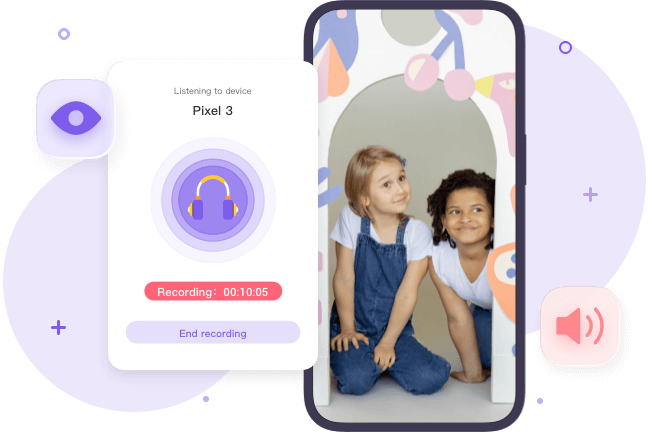



Одним из таких вариантов программного обеспечения является FlashGet Kids, совершенно новое приложение для родительского контроля, расширяющее эти функции.
Хотя это приложение имеет много общего с другими приложениями с точки зрения параметров мониторинга, оно также включает в себя функции запись окружающей среды. Вот краткий обзор некоторых его особенностей:
- Фильтрация веб-контента и блокировка приложений
- Управление экранным временем
- Отслеживание Местоположение
- Мониторинг Уведомления
- Социальные медиа надзор
- Безопасность запись звукового окружения
запись и мониторинг окружающей среды с помощью FlashGet Kids
Используя FlashGet Kids, родители могут прослушивать окружение устройства ребенка и видеть угрозы, которые могут быть не видны из истории звонков или сообщений.
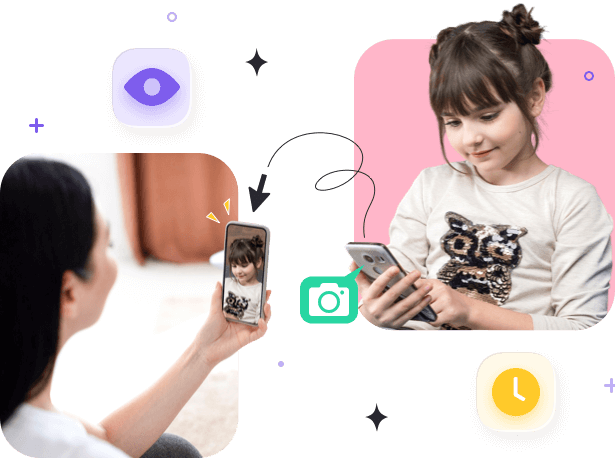



Некоторые шаги, которые вы можете предпринять при подготовке к запись и мониторингу окружающей среды с помощью FlashGet Kids, включают:
- Загрузите и установите FlashGet Детское приложение для родителей на своем телефоне с их официального сайта, в App Store и Play Store.
- Зарегистрируйте учетную запись FlashGet , чтобы зарегистрироваться и использовать приложение. Если у вас уже есть учетная запись, войдите в систему, чтобы продолжить.
- Загрузите и установите приложение FlashGet Kids для детей на телефон вашего ребенка.
- Идите вперед и привяжите FlashGet Kids приложение родительского контроля на вашем телефоне на детскую версию на их телефоне. Вы введете 9-значный код из приложения родительского контроля на телефон вашего ребенка.
- Следуйте инструкциям на телефоне вашего ребенка, чтобы предоставить приложению доступ к другим функциям телефона, например к камере.
- Перейдите в Прямой Мониторинг на панели родительского контроля. Нажмите « Одностороннее Аудио », затем «Продолжить». Затем вы можете прислушаться к звукам вокруг ребенка.
- Нажмите « Запись », чтобы начать запись . Нажмите кнопку «Завершить запись », чтобы завершить запись . Все запись будут храниться в разделе «Я» > «Мои Запись ».
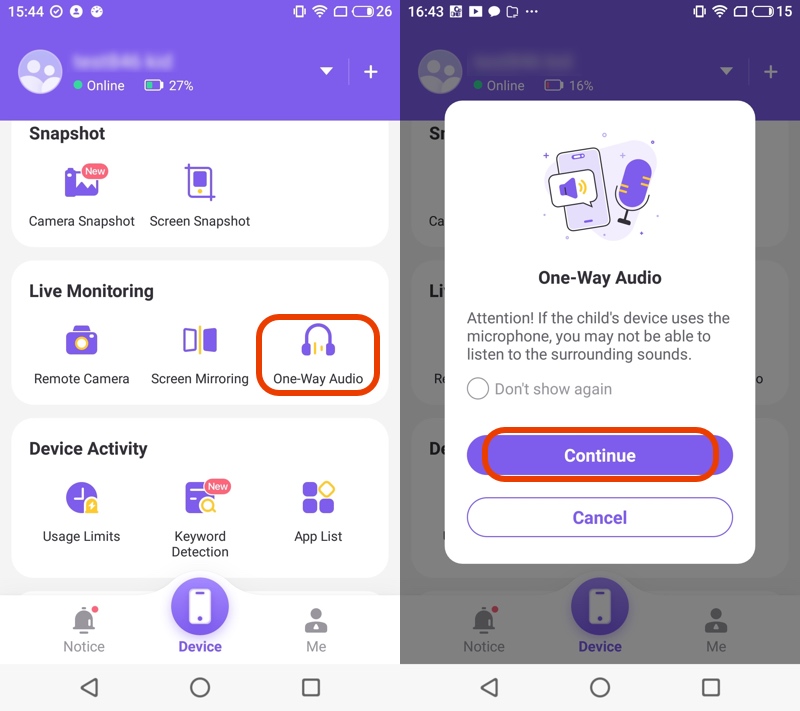



Окончательные вердикты
Удобство запись на телефоне — это не просто роскошь, это необходимость документирования, защиты и оптимизации.
Независимо от того, являетесь ли вы пользователем Android или iPhone, всегда есть способ запись звук, звонки и другие окружающие звуки, когда возникнет такая необходимость.
Это демонстрационный рейтинг приложения родительского контроля такие как FlashGet Kids, которые показывают, что эти возможности защищают членов нашей семьи.
Крайне важно понять, как эффективно использовать эти функции, не нарушая конфиденциальность и законы, чтобы максимально эффективно использовать наши устройства.

